If you can only name four national parks in the United States, chances are at least one of them is in California. It’s equally likely that whichever park comes to mind is not one of California’s least visited, however. While Lassen, Channel Islands, Pinnacles, and Redwood national parks are worthy of just as much attention as Yosemite, part of their appeal is that they’re not the parks people come from across the country, or around the world, to see. These are the least visited national parks in California and the reasons they won’t stay that way forever.

California's Four Least-Visited National Parks Are Some of the Raddest Places in the US. Here's Why.
1. Lassen Volcanic National Park
Five hours north of the San Francisco Bay, hell awaits you. Well, Bumpass Hell. Smoldering mud pots, belching sulfur vents, and hills that look like they’re bleeding. But for every smoking pit, there’s an ethereal ice blue lake, a tumbling waterfall, and an alpine mountain peak. This is probably the reason that, in recent years, Lassen has finally started seeing an uptick in visitors — with an all-time high of over 542,000 in 2020 — though the number still falls far short of the attention this stunning landscape merits.
Bumpass Hell and Lassen Peak
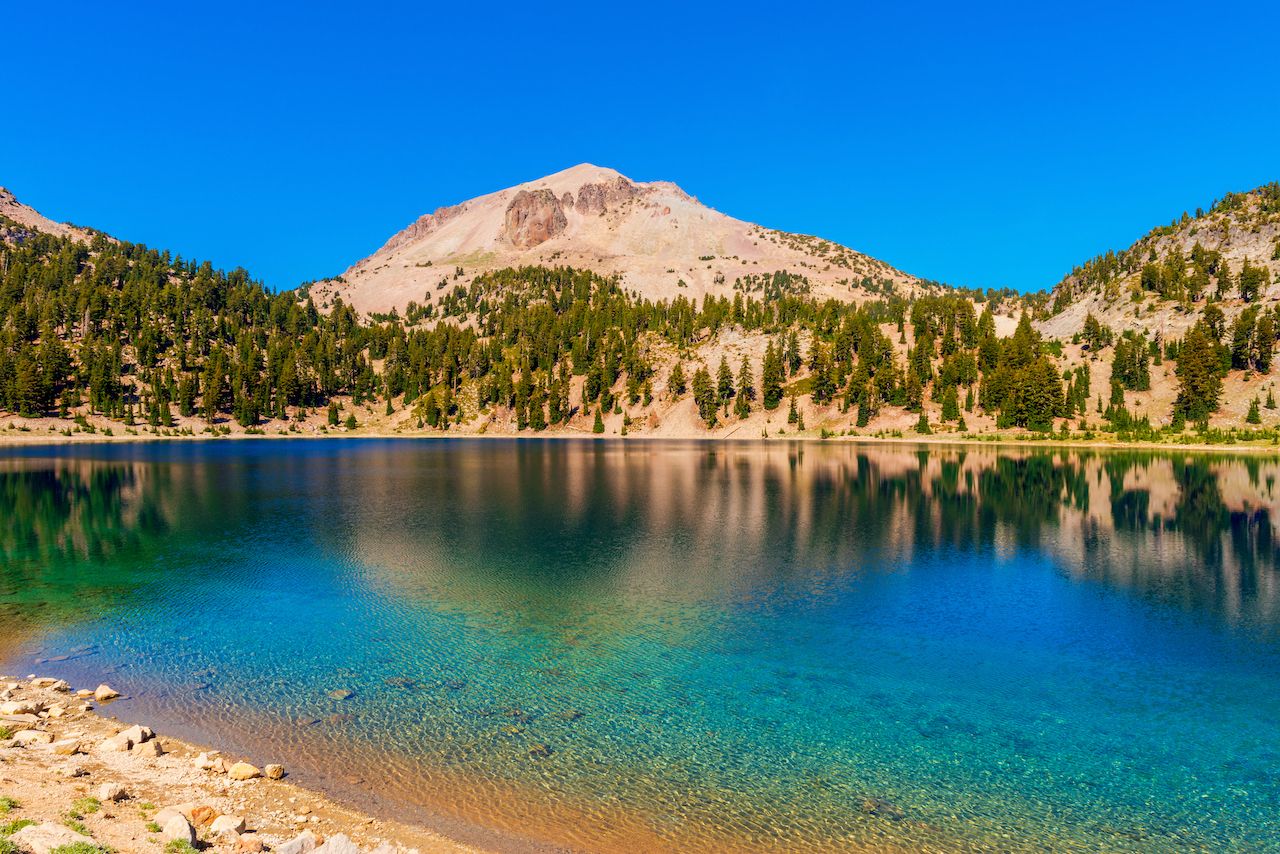
Photo: Allard One/Shutterstock
Start your trip from Bumpass Hell, which rewards hikers with an experience of Lassen’s hydrothermal area via a three-mile boardwalk trail. It’s not just a visual experience here — the noisy mud pots and the smell of sulfur are all integral to the experience.
Lake Helen is the snowiest place in California and it’s covered in ice from October to July. Towering above it is the 10,457-foot Lassen Peak — one of the largest lava domes on Earth. If you hike the five miles to the top, you’ll get one of the best views in the entire park.
Kings Creek and Mill Creek Waterfalls
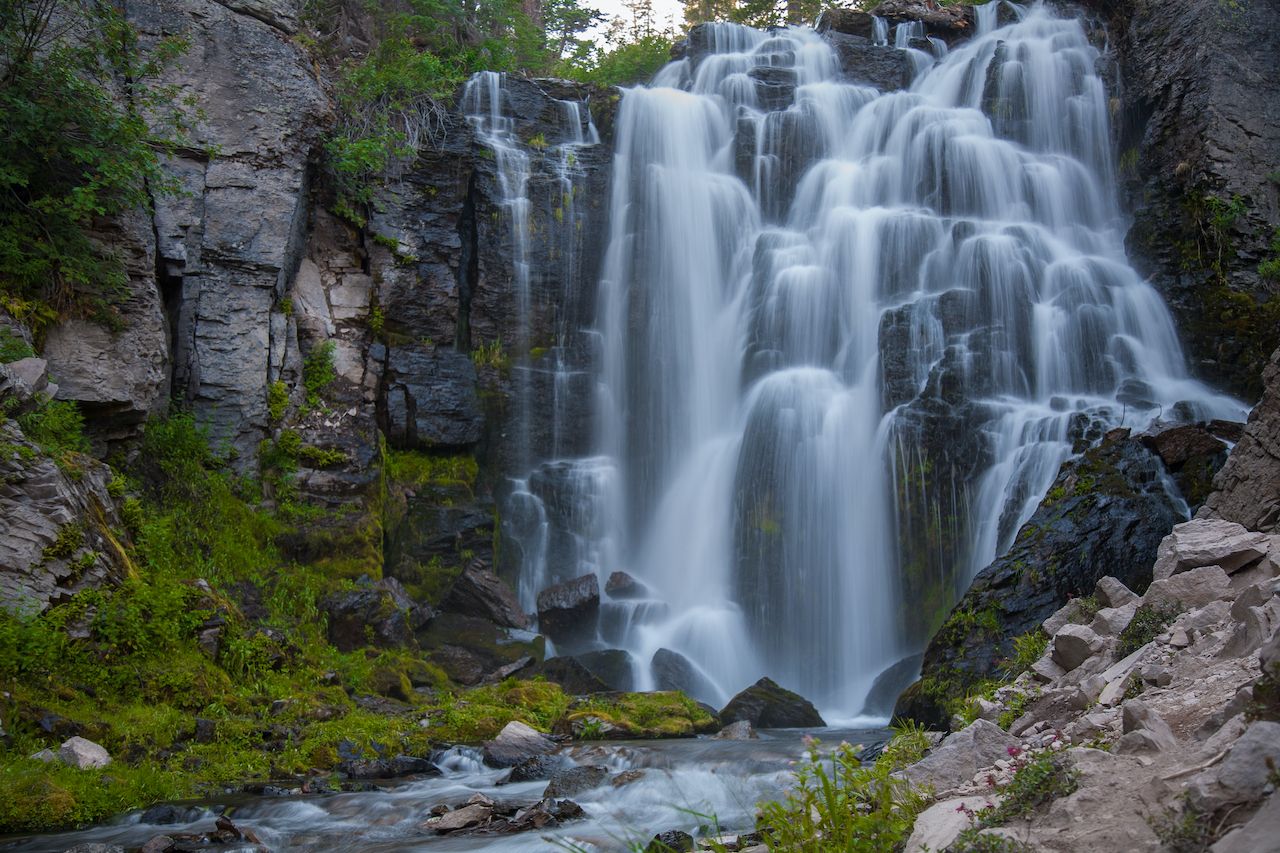
Photo: Micheal Lee/Shutterstock
This place has sulfur and waterfalls. From the main road, a short hike through a green meadow, pine forest, and slippery steep rocks will bring you to Kings Creek Falls. Near the southern park entrance, follow the Mill Creek Trail over some wildflower-covered hills to the 70-foot Mill Creek Falls — the highest falls in the park.
Painted Dunes and Cinder Cone
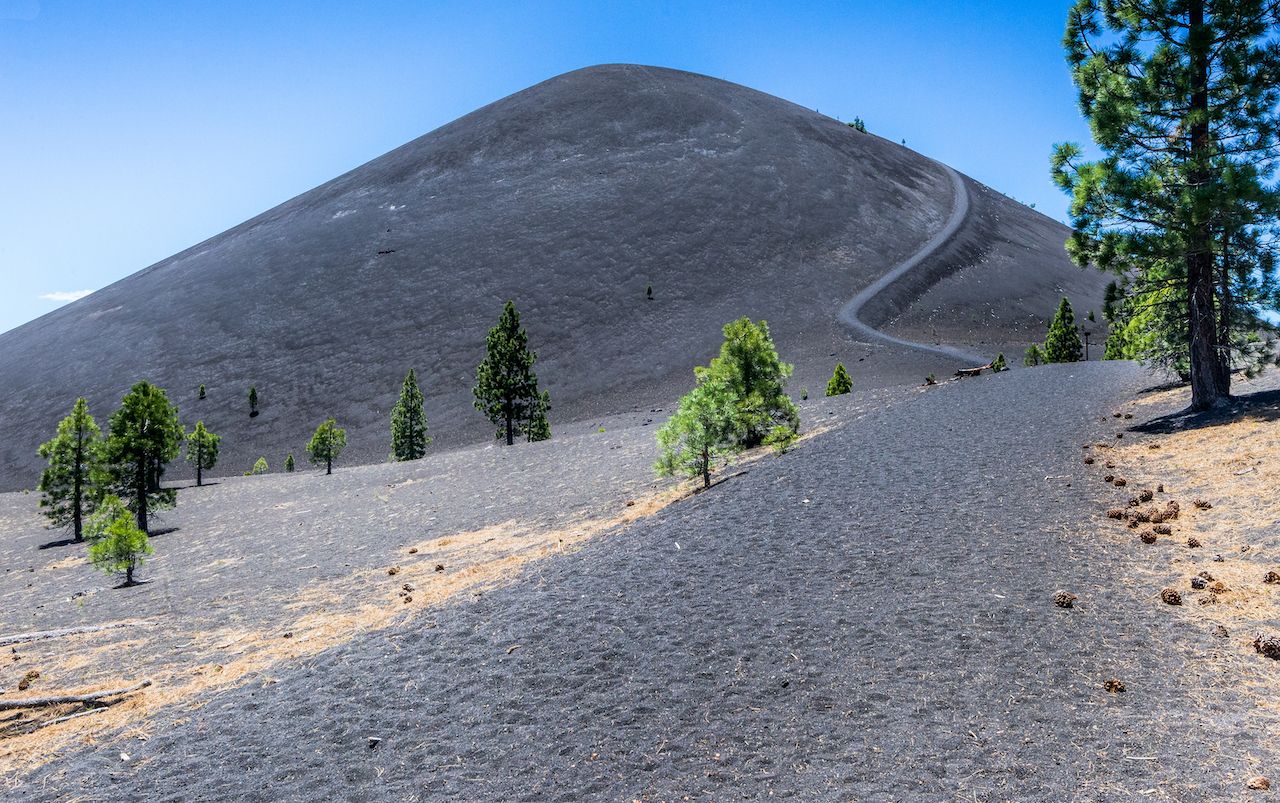
Photo: Evan Sloyka/Shutterstock
Finish your trip to Lassen Volcanic with a trip to the far side of the park. On the eastern side, lies Cinder Cone and the Painted Dunes. Bizarrely bloody looking hillsides roll up to the basalt base of Cinder Cone. As you hike the steep trail to the top, you can marvel at its alien landscape. The cool lava beds border the oxidized hillsides of Painted Dunes and abruptly stop at a forest. These are the remnants of an 18th-century eruption. As you circle to the right up the trail, Lassen Peak comes into view. Be prepared for a challenging hike to the top — the rocks are loose and slippery.
2. Channel Islands National Park
Readers of Scott O’Dell’s Island of the Blue Dolphins will be familiar with these remote California islands. Named the ‘Galapagos of North America,’ this place is home to numerous endemic plant and animal species, including a subspecies of fox on each island. With only 400,000 visitors a year (and only 167,000 in 2020), the islands are the perfect place to get away from the crowds.
Located off of the Santa Barbara and Ventura coastline, Channel Islands National Park includes five of the eight Channel Islands. Book a ticket out to Anacapa and Santa Cruz islands all year, or Santa Rosa, Santa Barbara, and San Miguel islands with Ventura and Oxnard-based Island Packers, which is the official boat concessionaire for the national park.
It might seem like a bit of a trip, which is certainly why it’s one of California’s least visited national parks, but getting to the islands is half the adventure. Your boat will leave in the foggy early morning, and on your way out, eerily lit oil derricks will glow in the distance. Sit on the top open deck, get splashed in the face, and watch the coast fade away. Keep your eyes open for frolicking dolphins and a breaching whale. For a warmer and less wet experience, sit in the lower enclosed deck and enjoy a hot coffee. Whichever island you visit, don’t be late for your return boat, or they may leave you behind.
Sea caves and kelp beds

Photo: Katharine Moore/Shutterstock
Kayaking, snorkeling, and diving are all popular activities available on the islands. Kayak into one of the largest known sea caves in the world, the Painted Cave, on Santa Cruz island. Dive into the temperate and calm waters off Anacapa. From here you can swim through lush kelp beds and spot Garibaldi’s, brittle stars, leopard sharks and sea lions. You can pay to bring a kayak along to the islands, or you can take a guided tour with the Santa Barbara Adventure Company. Sea kayaking can be a high-risk activity, so going with experienced guides who can point out marine life is a good option.
Santa Cruz Island: Scorpion Ranch to Smuggler’s Cove

Photo: Sadie Whitelocks/Shutterstock
Santa Cruz Island hosts a derelict sheep ranch, but it’s really the incredible vistas, bright blue waters, and wildlife that makes this island interesting. The hike from Scorpion Ranch to Smuggler’s Cove on Santa Cruz island is one of the most isolated hikes I’ve ever done. Hike up the barren hillsides dotted with rare, endangered plants that you may not see anywhere else in the world. At Smuggler’s Cove, sit on a tree stump and watch waves pound the rock-strewn beach. You can imagine rum runners of the 1920s loading their boats in the moonlight.
Santa Cruz Island: Scorpion Ranch to Cavern Point
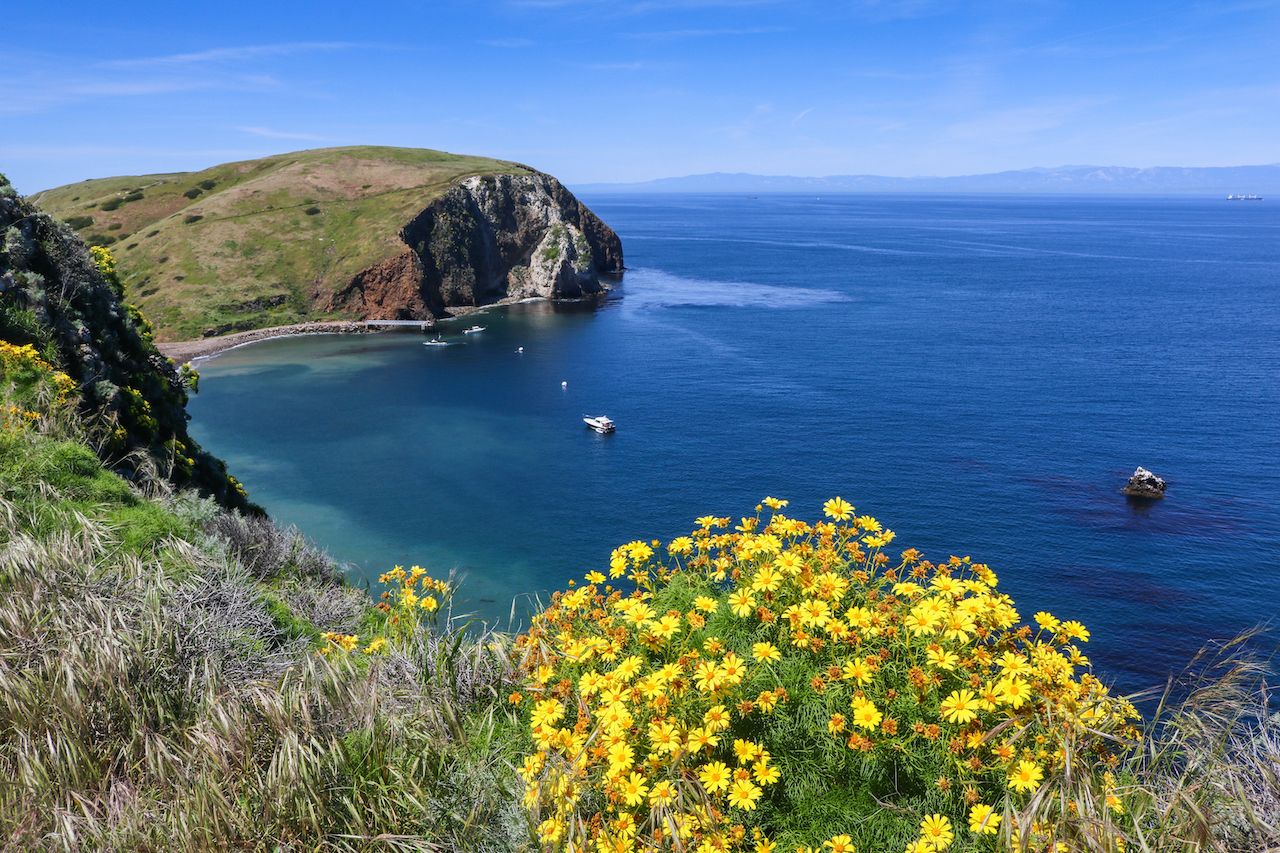
Photo: Bram Reusen/Shutterstock
In the other direction from Scorpion Ranch, walk through a campground and a canyon to Cavern Point. Look over the edge and see if you can spot a kayaker entering a sea cave. Views over the Pacific go on for miles. Don’t forget to look at the ground. Small island foxes pop out of nowhere. With no predators on the island, these guys aren’t going to be afraid of you.
3. Pinnacles National Park
Pinnacles National Park is a recent addition to the National Park system. Upgraded from a National Monument in 2013, it receives around 175,000 visitors a year. Pinnacles packs caves, monumental volcanic rock structures, and a rareT bird habitat into its 44 square miles (about 1/4th the size of Lassen Volcanic).
Just a bit of general information about Pinnacles: it has two entrances and there is no through-road. If you’re looking to camp, go through the eastern entrance near Hollister to access Pinnacles Campground. The western entrance outside Soledad is for day use only. Both entrances provide access to all park features. You just have to hike. Also, Pinnacles gets to be over 100 degrees in the summertime, so enjoy this park in the fall and spring. In winter, rains can complicate visits to its caves, so check the website for updates.
Rock climbing and caves

Photo: Rafid Shidqi/Shutterstock
The volcanic rock structures are a playground for rock climbers. Novices and experts alike will be able to find a route here. Just watch out for crumbling rock — these rocks are much softer than granite. Peregrine falcons and hawks nest there, so call ahead to ensure the route is open during nesting season.
If you’re more into going under rocks and not climbing over them, squeeze through talus caves that are home to bat colonies. Talus caves are not real caves, but the remnants of rocks falling and getting stuck in chasms. Pinnacles hosts two sets of these caves: Bear Gulch and Balconies. It can get pretty dark so bring a flashlight and even a light jacket, as it can also be much cooler. The caves are periodically closed to protect nursing bats, so check the park’s NPS website for updates.
Chalone Peak and High Peaks
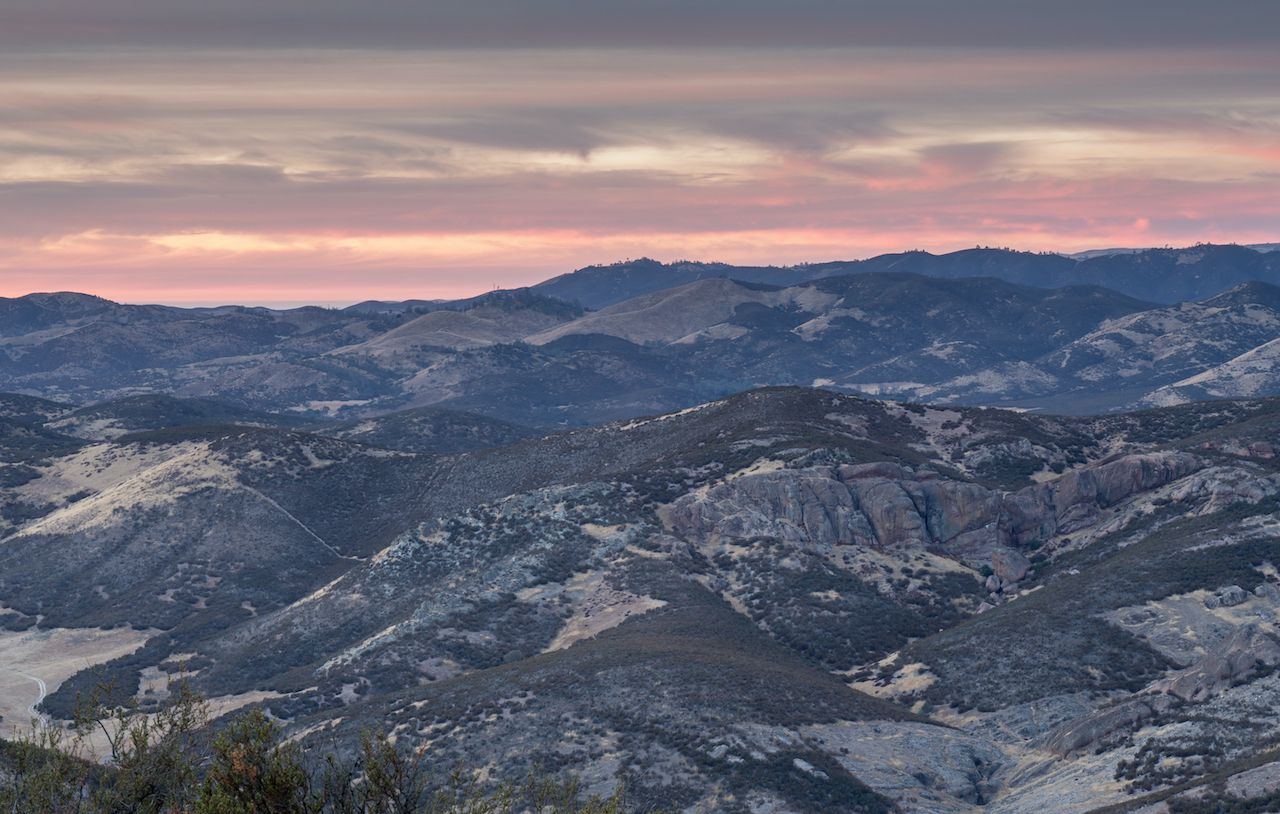
Photo: yhelfman/Shutterstock
Hike the Chalone Peak trail to get a spectacular view of the Salinas Valley, Santa Lucia Range to the south, and the Gavilan Range to the north. Hiking the High Peaks Trail offers the best look at the area’s volcanic history and the chance to spot a rare California condor. Pinnacles is one of the few places these enormous, and kind of terrifying, birds make their home. Trailblazers of the 1930s got creative with the high part of the trail: steps have been carved into the rock and handrails were made over steep red and green-hued rock formations and tunnels. On the lower part of the loop, native wildflowers blossom filling the dry river bed with a colorful carpet.
4. Redwoods National and State Parks
The only justifiable reason for the serene woodland being one of the least visited national parks is its distance from big cities. Set in California’s sparsely populated northernmost coast, Redwoods is a six-hour drive from both San Francisco and Portland, Oregon. In fact, a large number of the 500,000 visitors who do come (only 265,000 in 2020) are stopping along the way in their lengthy drive from a major California city to Portland or points north.
Those who visit are drawn by the possibility of seeing the tallest trees in the world, the coast redwoods. These can be found not just in the national park, but in four adjacent state parks that, managed together, offer the greatest protection to this ecosystem. Beyond these majestic trees, visitors will also encounter 200 miles of trails, 40 miles of stunning coastline, old growth maples and abundant ferns, and wildlife ranging from beavers and bats to bobcats and black bears.
Taking in the mighty giant

Photo: Roman Khomlyak/Shutterstock
Coast redwoods, a type of sequoia tree, don’t just grow to an awesome height of nearly 370 feet, they are also ancient — in two ways. Individually, they easily live several hundred years, sometimes even reaching the ripe old age of 2,000. They are also age-old collectively, pre-dating mammals by many millennia. They existed during the time of the dinosaurs 160 million years ago.
The Boy Scout Tree Trail is a 5.5-mile loop that provides a wonderful way to admire these living organisms. Beyond craning your neck upward to try and get a peak at the tree top, you’ll find your eyes admiring the forest floor as well. The coast here is very foggy, and coast redwoods absorb half of their moisture from fog. All that moisture and darkness on the forest floor is a wonderful habitat for these large ferns.
Alternatively, if you don’t have a lot of time, you can drive up the winding Bald Hills Road on the southern end of the park to the parking area. The 1.5 Ladybird Johnson loop is a great way to take in these majestic trees.
Coastal drives
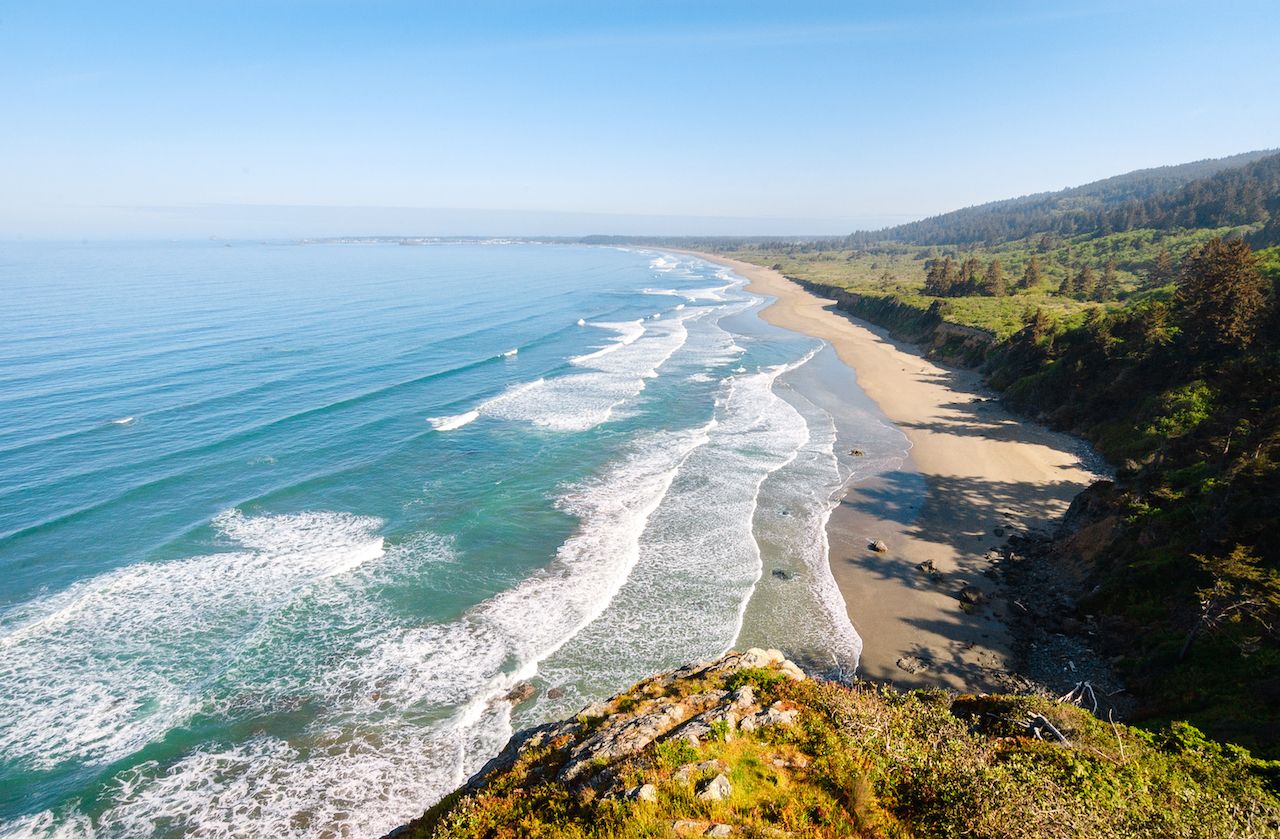
Photo: Zack Frank/Shutterstock
For those who don’t have a lot of time to dedicate to the park, or who aren’t big hikers, Redwood offers up a plethora of drives. There’s the Bald Hills Road, noted above, as well as opportunities to take in the Pacific Ocean. Driving on Highway 1, take the Enderts Beach Road just over two miles in, and you’ll see grazing elk and stunning ocean views with views of Elk and the Pacific Ocean. At the end is the trailhead for the Coastal Trail.
A version of this article was previously published on September 6, 2016, and was updated on June 2, 2021, with more information.